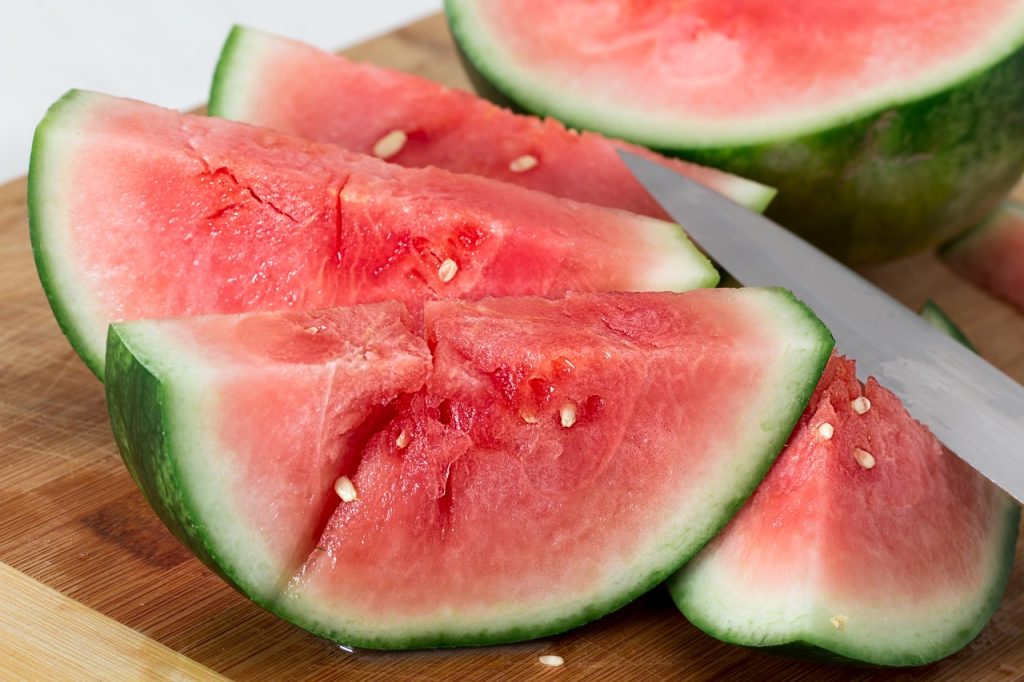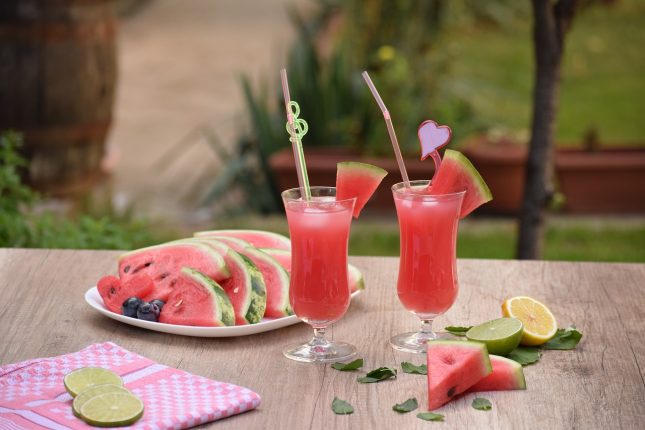10 Exciting Facts About Watermelons That Are Kept Secret

If you are just hearing about these beautiful fruits, then you are missing out on the world of fruit lovers. Watermelon is made of 90% water, which makes it fresh enough for consumption. We are going to share with you the most exciting facts about watermelons and the best ways to use them to your benefit.
Watermelons are often mistaken for vegetables, but they are actually fruits. They are a member of the Cucurbitaceae family, which also includes fruits like cucumbers, squash, and pumpkins.
Let’s check out some exciting facts about watermelons:
1. History of Watermelons
The origin of watermelons has historically been attributed to Asian nations, but other sources contradict this. It is believed, as we learned from history books, that they were discovered 5,000 years ago in some parts of Africa.
Related Post>>>Foods to Avoid for Weight Loss If You Are Trying to lose weight
The well-known sweet dessert watermelon, C. lanatus, has a restricted genetic basis, which suggests that it came through a sequence of selection processes in a single ancestor generation.
It has non-bitter, delicate, well-colored flesh. The objective of the current investigation was to pinpoint the historical context and geographic origin of sweet dessert watermelons.
It was revealed that watermelons were eaten in ancient Egypt, as depicted on tombs. Although the information about watermelons in ancient Egyptian history cannot be verified, numerous tales attest to their provenance.
2. Watermelons are Fruits but not Vegetables
Many people think that watermelons are part of the vegetable family, but the fact is that they are fruits that belong to the cucumber, pumpkin, and squash families.
Watermelon is one of these fruits because it is thought to have sweet seeds. You can eat both the fruits and seeds of watermelon. The benefits derived from eating watermelon seeds are greater than what is written here for you to read. And this is backed by scientific evidence that eating watermelon seeds nourishes the body as well. Without experiencing any fear, you can eat it like any other fruit.
3. Watermelons Contain over 90% Water
Another facts about watermelons is their water content. It has about 90% more water than other fruits, and this makes it refreshing for human consumption. They are hydrating and the ideal fruit for a hot summer because of their high water content.
4. They can shield the skin
Your skin and eyes will be protected from harm if you eat watermelon. This is due to the fact that it contains more vitamins.
Read: 5 Benefits of Coconut Oil for the Hair You Don’t Know
It is proven that vitamin A helps promote skin beauty and improve eye health. It has 10 times as much beta-carotene, a precursor to vitamin A, per 100 grams as an apple, with an estimated 245 milligrams per 100 grams.
5. The entire part of The Melon Can Be Eaten
The entire watermelon is nutritious, even though many people only choose to eat the reddish part of it. In many regions of the world, watermelon’s green portion is used for stew, and the dried seeds are used as crunchy snacks. China and some regions of South America do not throw away watermelon seeds or the back.
6. We have over 1200 varieties of Watermelons
Four varieties of watermelons can be distinguished: picnic or seeded, seedless, icebox, and yellow.
The refreshing flavor and attractive appearance of watermelons set them apart from other delectable fruits. Let us look at the four main classifications that watermelons are typically placed in in order to make classification easier and give you a better understanding. These divisions include varieties that are seeded (or picnic), seedless, icebox (also known as mini or personal size), and yellow or orange. We will not only describe these categories in this guide, but we will also point out some interesting watermelon varieties that fall into each category.
1. Seeded Watermelons: A Nostalgic Choice
Watermelons with seeds, also known as picnic watermelons, evoke memories of childhood thanks to their large, dark seeds.
Although some people might find the seeds a little inconvenient, they help create the genuine watermelon experience that many of us recall from our childhood.
In this category, the Crimson Sweet variety is one of the most popular options. This seeded melon is a favorite among fans of traditional watermelon because of its delicious, incontrovertibly sweet flesh that is a rich, deep-red color.
2. Seedless Watermelons: Convenience Redefined
For those who prefer a hassle-free indulgence, seedless watermelons are very good for them. These forms of watermelons are meticulously bred to have smallish, edible, and nearly invisible seeds.
Read More: Scientific Evidence of Watermelon Seed Tea Benefits
Customers like them because of how convenient and tasty they are, as well as the convenience they offer when eaten, especially in hot weather. Imagine enjoying the greatest of watermelons without the interruption of seeds.
It’s no wonder that seedless watermelons have attracted a lot of consumers and even secured a special place in many households.
3. Icebox Watermelons: Small and Flavorful
If you’re seeking a more compact watermelon option, then this type of watermelon will solve your equations. These small watermelons, also known as mini or personal-sized watermelons, are perfect for families and friends at all get-togethers. Their size doesn’t compromise on taste; they have a unique, delicious taste as compared to their larger counterparts.
4. Yellow/Orange Watermelons: A Visual and Flavorful Feast
Breaking away from the traditional red hues, yellow/orange watermelons offer a visual and gustatory delight. The facts about watermelons are that they have varieties with different colors which do not affect their sweetness.
These varieties introduce a unique color of watermelon as compared to the type we already know. Among the intriguing types in this category, the Golden Midget stands out. Its rind undergoes a color transformation, turning a vibrant yellow when it reaches optimal ripeness.
In conclusion, there are so many facts about watermelons that we may not be able to give all the details. Whether you’re fond of the nostalgia evoked by seeded watermelons, the convenience of seedless options, the compact nature of icebox varieties, or the visual and flavorful appeal of yellow or orange melons, there’s a watermelon type that’s perfect for you. You will appreciate eating watermelon and the joy it may bring you if this is your first time giving it a bite.

